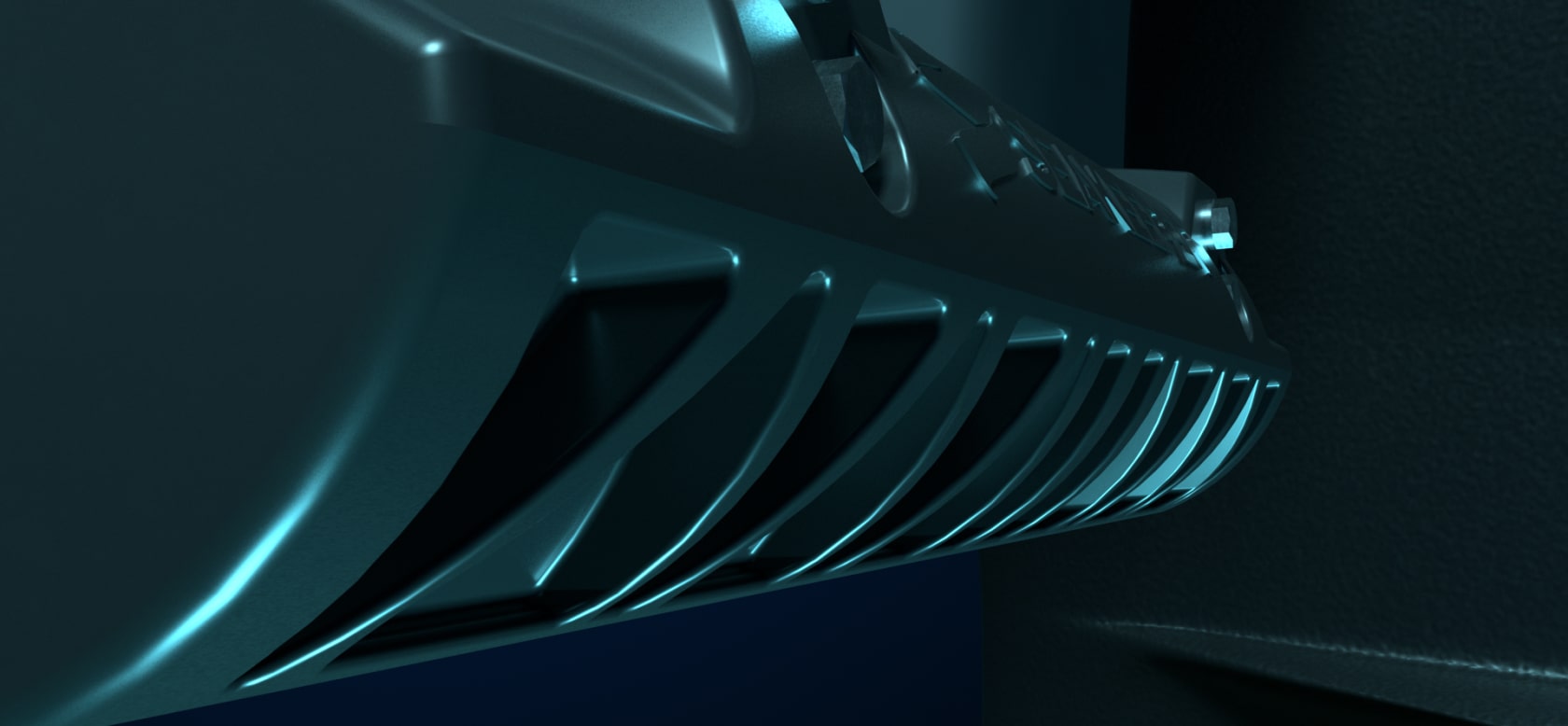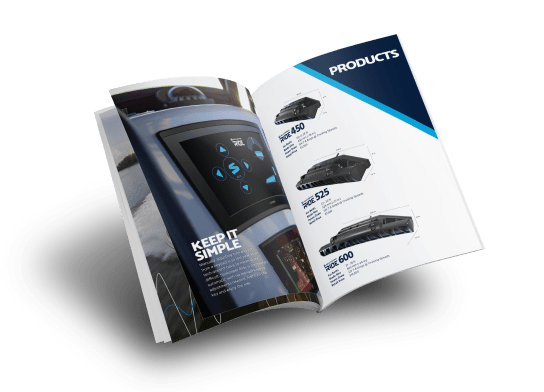
FAQs
Products
Attitude Control Systems (ACS) are used in air and space crafts to control pitch, roll, and yaw underway. The introduction of Seakeeper Ride paved the way for the attitude control in the marine industry. We call it a Vessel Attitude Control System (VACS).
Seakeeper Ride’s controllers create lift, much like conventional trim tabs, by creating a high-pressure wedge of water under the transom, in front of the controllers. This water wedge acts like trim tabs to lift the transom of the boat, but thanks to its proprietary software and rotary design, the Seakeeper Ride system moves significantly faster, creating the same force in a fraction of the time. Since Seakeeper Ride is fully automatic, the forces created by the controllers are used precisely and correctly on every wave, before it’s felt onboard, making Seakeeper Ride the only complete underway stabilization system available today.
For the most stabilized vessel both at rest and underway, and the greatest performance available in boating today, you want both Seakeeper and Seakeeper Ride. The addition of a Seakeeper enhances the underway performance of Seakeeper Ride by an additional ~10-20% from our tests, so we suggest you go for both if you can!
You can see performance reports for both Seakeeper and Seakeeper Ride installations, but keep in mind that each site only shows results for that product. Performance reports on both sites don’t include both Seakeeper and Seakeeper Ride together.
Seakeeper Ride’s controllers are mounted to both sides of the transom below the waterline. Additional components are installed inside a console and are wired to the controllers. If your boat has recessed transom pockets designed for traditional trim tabs, we also have solutions for you—explore your options here.
Seakeeper Ride comes with a standard warranty covering 2 years from the date of delivery.
Most ~37-42’ boats will be able to fit the two controllers in the Seakeeper Ride 750 system. We recommend the Seakeeper Ride 750 system if the transom geometry allows for it. If there are obstructions or elements of the hull design that restrict the available space for the use of two larger controllers, the Seakeeper Ride 750 Quad system is an alternative that may make a Seakeeper Ride installation possible.
To stabilize a larger boat, we needed to provide more span, or controller width, and operate the controllers at a high rate of speed and precision. To handle the increased loads generated as a result, we opted for a stronger material.
Performance
No. Seakeeper Ride eliminates pitch and roll while underway, where the uncomfortable and potentially dangerous pounding takes place. A Seakeeper gyrostabilizer can eliminate boat roll at rest.
The system begins having trim authority at 10mph and full stabilization benefits begin around 20-25 mph.
Yes! While Seakeeper Ride will not make dangerous seas safe to navigate and operators should still check weather forecasts and use common sense, it can be used in all conditions.
Yes! It’s common to see pitch and roll elimination of 45-70% in all headings and sea conditions. It’s not possible to eliminate all boat motion, but 45-70% reductions make an incredible difference in the comfort and safety of the vessel. It’ll make you yell “holy sh*t!” when you try it for the first time. Trust us.
All transom-mounted control systems create drag in the production of lift to adjust the running angle or list of the boat. The drag produced is proportional to deployment depth and time. Because the Seakeeper Ride blade deploys and retracts in milliseconds, adjusting the boat’s attitude only when needed, the drag duration is reduced compared to traditional transom-mounted systems. Our testing found that Seakeeper Ride improves comfort and safety (eliminating pitch and roll motions) without negatively impacting speed or efficiency. In many cases, we have seen an increase in speed and fuel efficiency with Seakeeper Ride-equipped boats due to pitch reduction and resulting decrease in hull resistance.
Boat Types
Seakeeper Ride is currently available for fiberglass and aluminum, stepped or non-stepped, monohull vessels up to ~55 feet in length.
A NMEA-compatible MFD with an ethernet port and a 12V DC power source with the capacity to deliver 10 amps are required to operate the Seakeeper Ride 450, Seakeeper Ride 525, and Seakeeper Ride 600. Seakeeper Ride 750, Seakeeper Ride 750 Quad, and Seakeeper Ride 900-1500 require the capacity to deliver 14-16 Amps.
Seakeeper Ride is compatible with select models from Garmin, Raymarine, Simrad, Navico, Lowrance, Furuno, Q Experience, and B&G.
A relatively flat transom surface is required for mounting Seakeeper Ride’s controllers to each side of the transom. Electrical components require a fixed, rigid, vertical surface to mount the software module, preferably inside a console.
Yes, if your boat has recessed transom pockets designed for traditional trim tabs, you’ve got two great options for installing Seakeeper Ride: 1) using a Seakeeper Ride Pocket Fit Kit, or 2) using a traditional fiberglass pocket fill. Click here to learn more about both solutions.
How to Buy
Yes! You can find Seakeeper Ride onboard over 100 new boat models already. We’re always growing our list of partners, so if it is not already equipped, your favorite boat brand should be soon!
Yes! Seakeeper Ride is available to refit the boat you already know and love if your boat meets a few parameters. We have a growing list of dealers and are adding more daily! Stay up to date by signing up for our e-mail list, or get your refit started today by contacting us!
Service and Maintenance
Seakeeper Ride’s maintenance is minimal. The actuators on each controller have zincs that need to be periodically inspected (about every 3 months) and replaced when about half of the anode has worn down. Instructions for zinc replacement can be found here.
As with most other boating accessories, a visual inspection and freshwater rinse is suggested after each use or each time the boat is removed from a saltwater environment.
A freshwater rinse after each use or each time the boat is removed from a saltwater environment is recommended. Mild marine soap is safe to use on your controllers to remove additional salt.
Bottom paint is recommended for systems that will be submerged for more than two weeks at a time. Instructions can be found here.
To remove marine growth, use a pressure washer (2,000 psi or less) or mild marine soap and a scrub brush. Further instructions can be found here.

